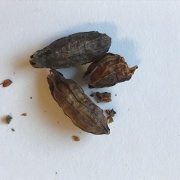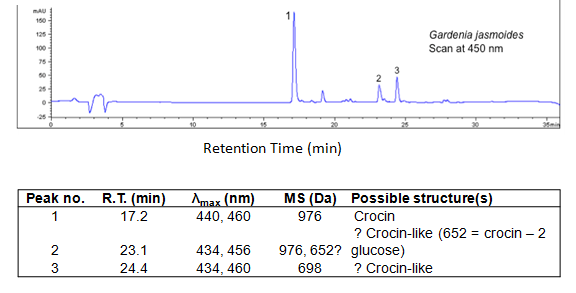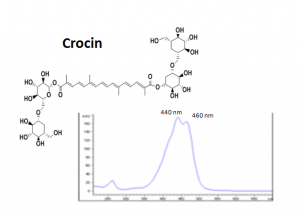Gardenia LC
Description
Gardenia Gardenia jasminoides is an evergreen shrubs and small trees growing to 1–15 meters (3.3–49.2 ft) tall. The tinctorial fruits are called huangzhizi in Chinese. This species can be difficult to grow because it originated in warm humid tropical areas. It demands high humidity to thrive, and bright (not direct) light. It flourishes in acidic soils with good drainage and thrives on [68-74 F temperatures (20-23 C)] during the day and 60 F (15-16 C) in the evening.
Gardenia jasminoides is indigenous in southern China, the Ryukyu islands and southern Japan.
Gardenia fruit is a direct dye that can be fixed onto the fibers without a mordant.
Historical importance
The fruit of G. jasminnoids is used as a yellow dye in the Eastern Asia, used both on fabric and food. Its fruits are also used in traditional Chinese medicine for their clearing, calming, and cooling properties.
Summary of results
The main colorants in Gardenia are carotenoids. Crocin, a molecule that was also found in saffron sigmas, is identified from extracts of grounded gardenia fruits. Gardenia also contains some flavonoids that could help to identify its dyeing source.
Analytical instrumentation and procedures
Chromatograms
Sample information
Identified compounds
| Compound | RT (min.) | MW | UV/vis | Other |
|---|---|---|---|---|
| crocin | 17.6 | 976 | 440,460 |
References
[1] [2] [3]



